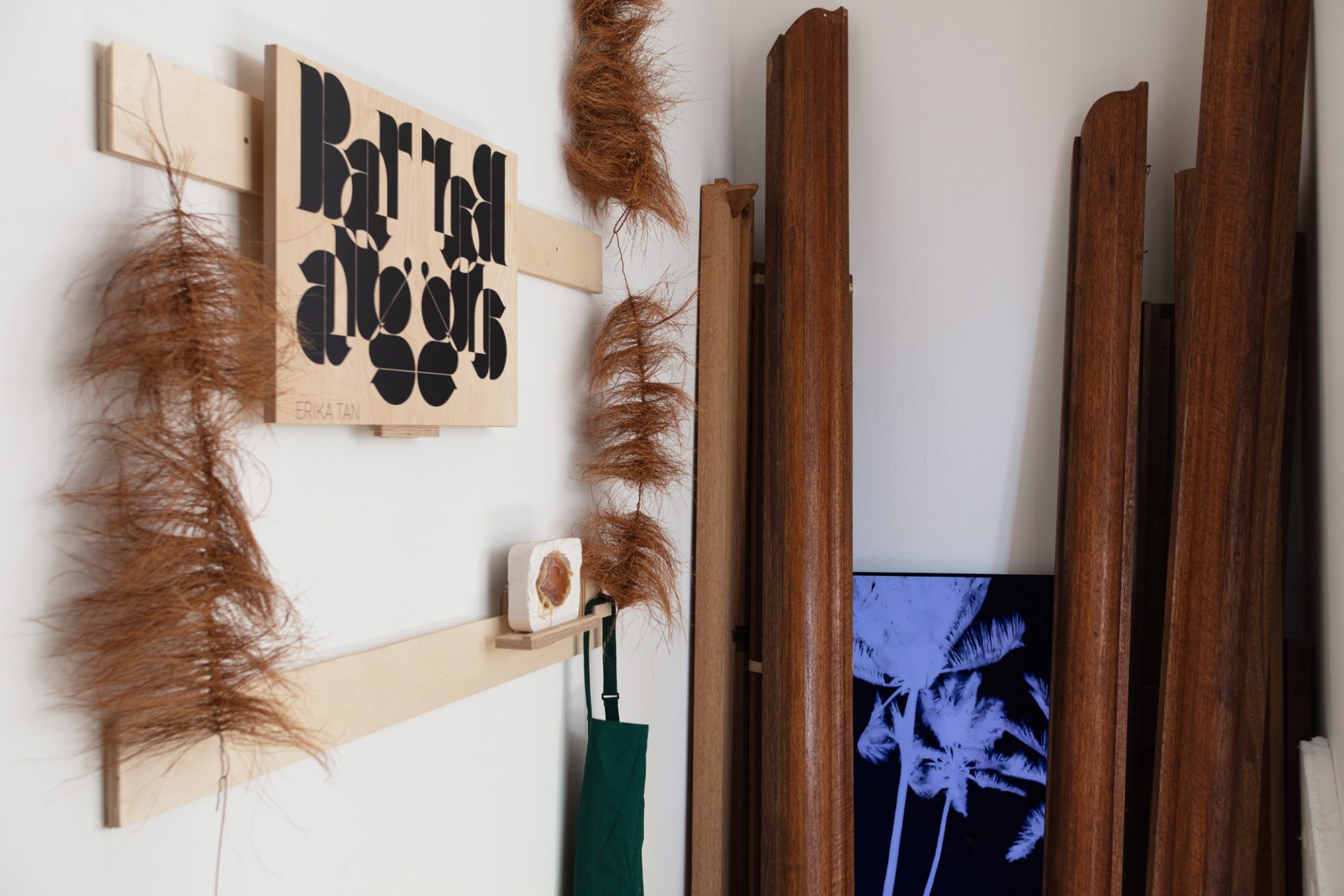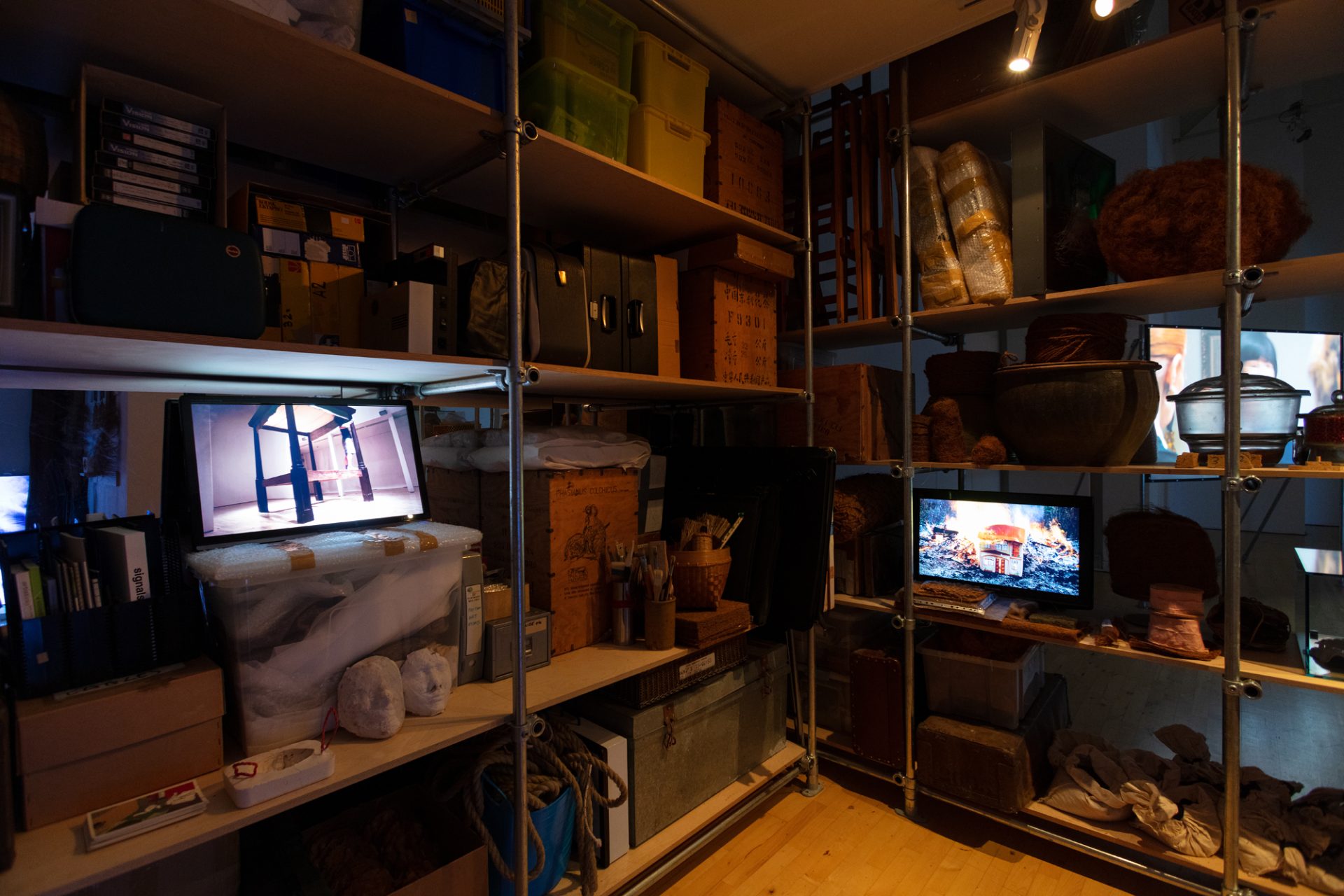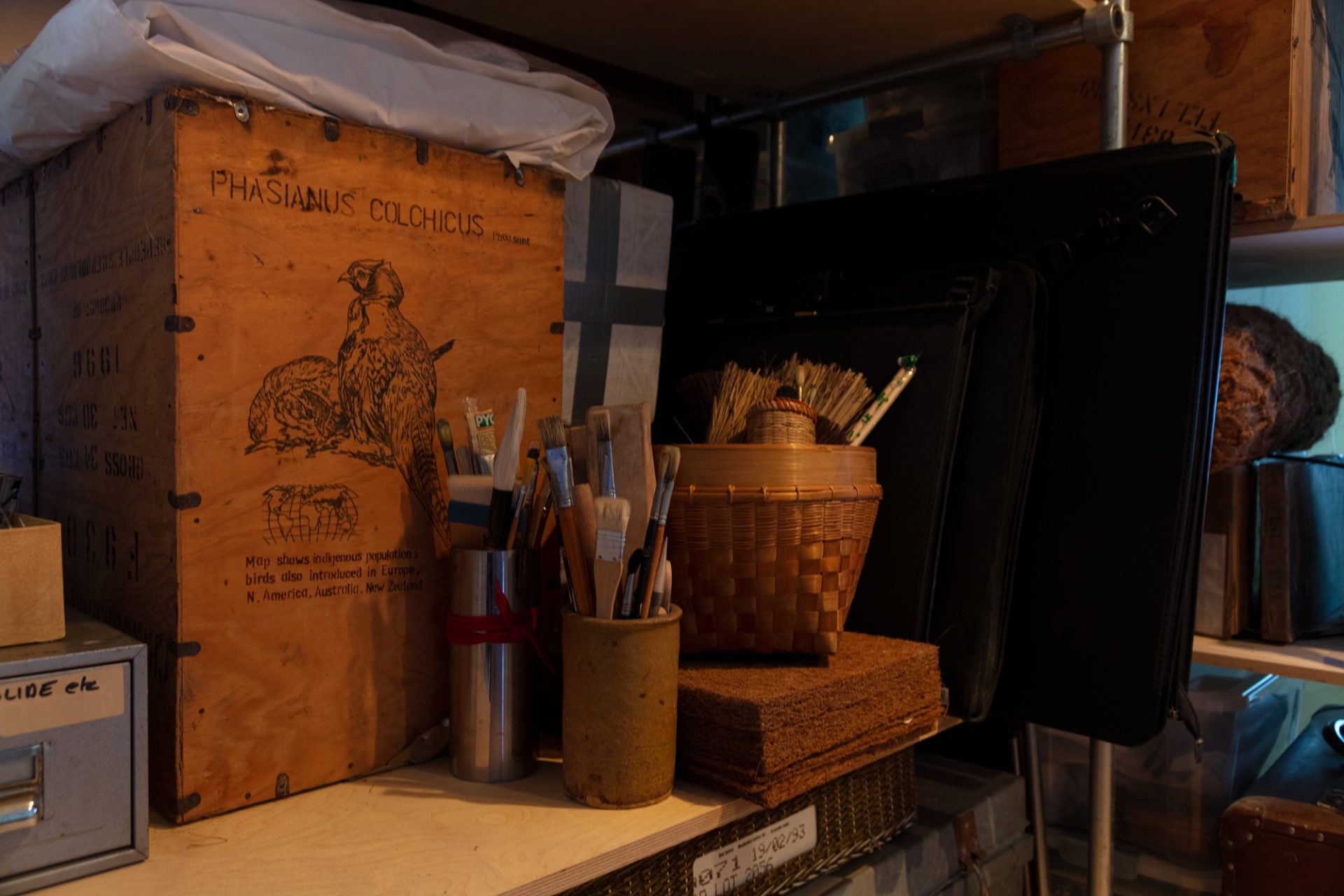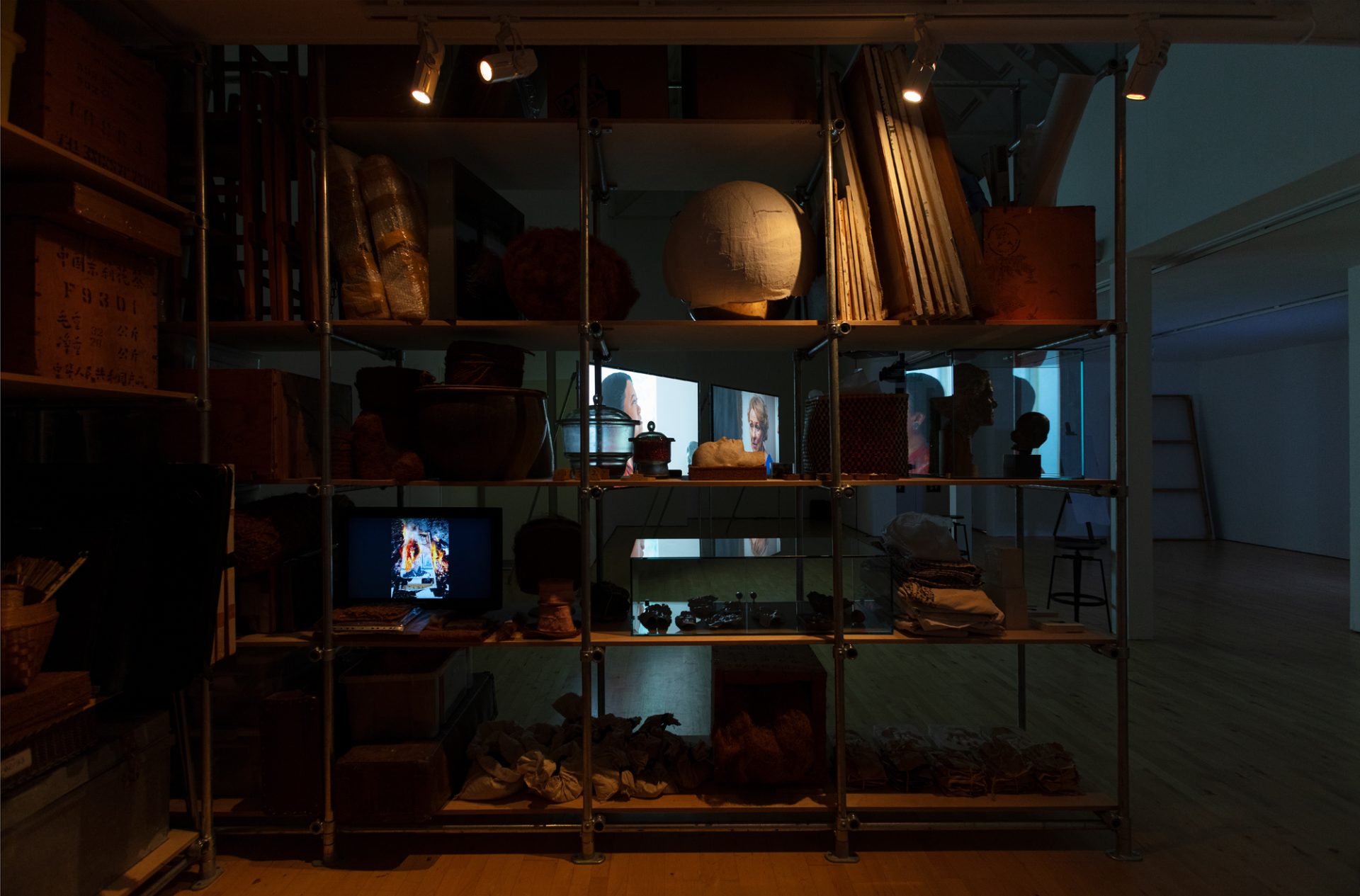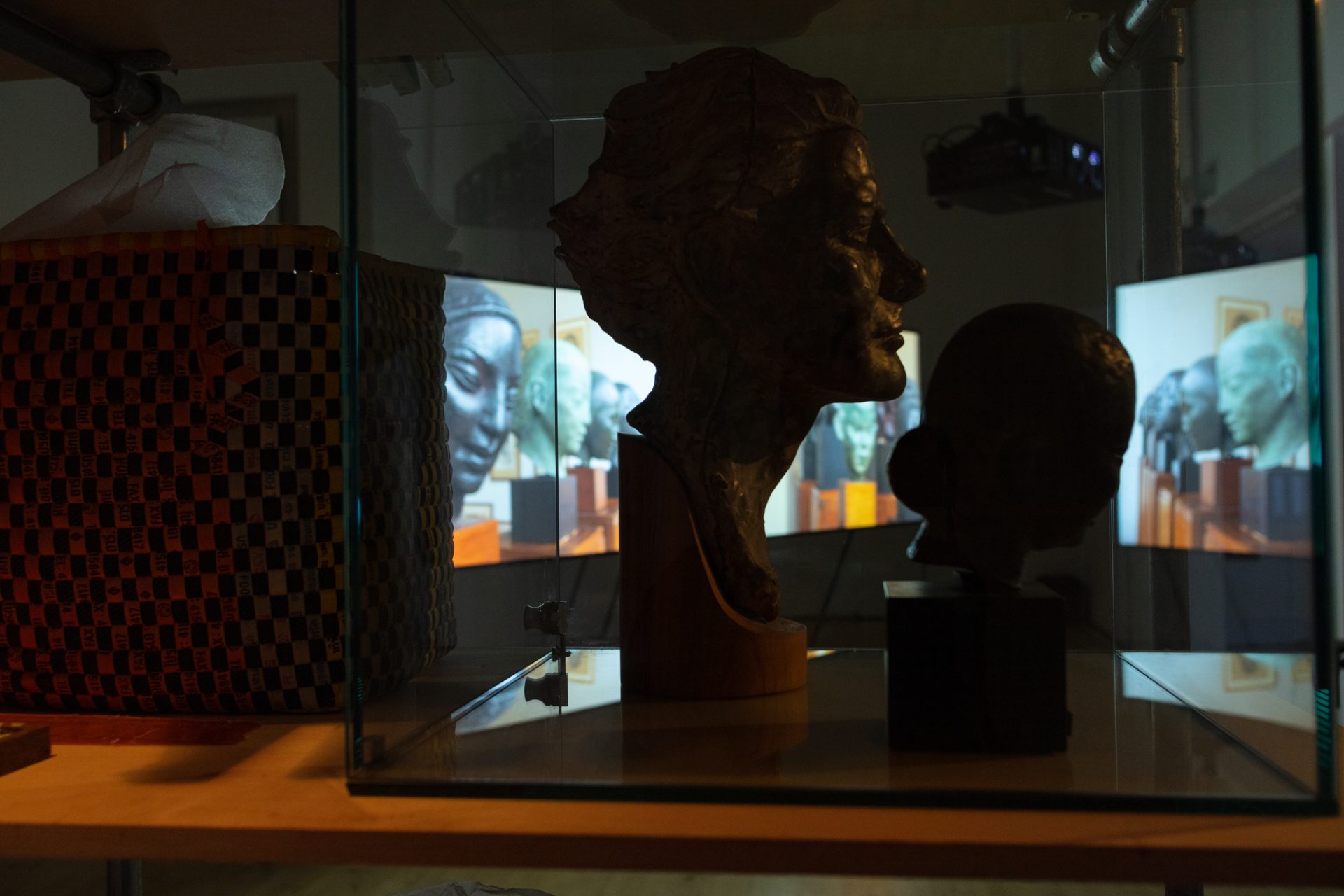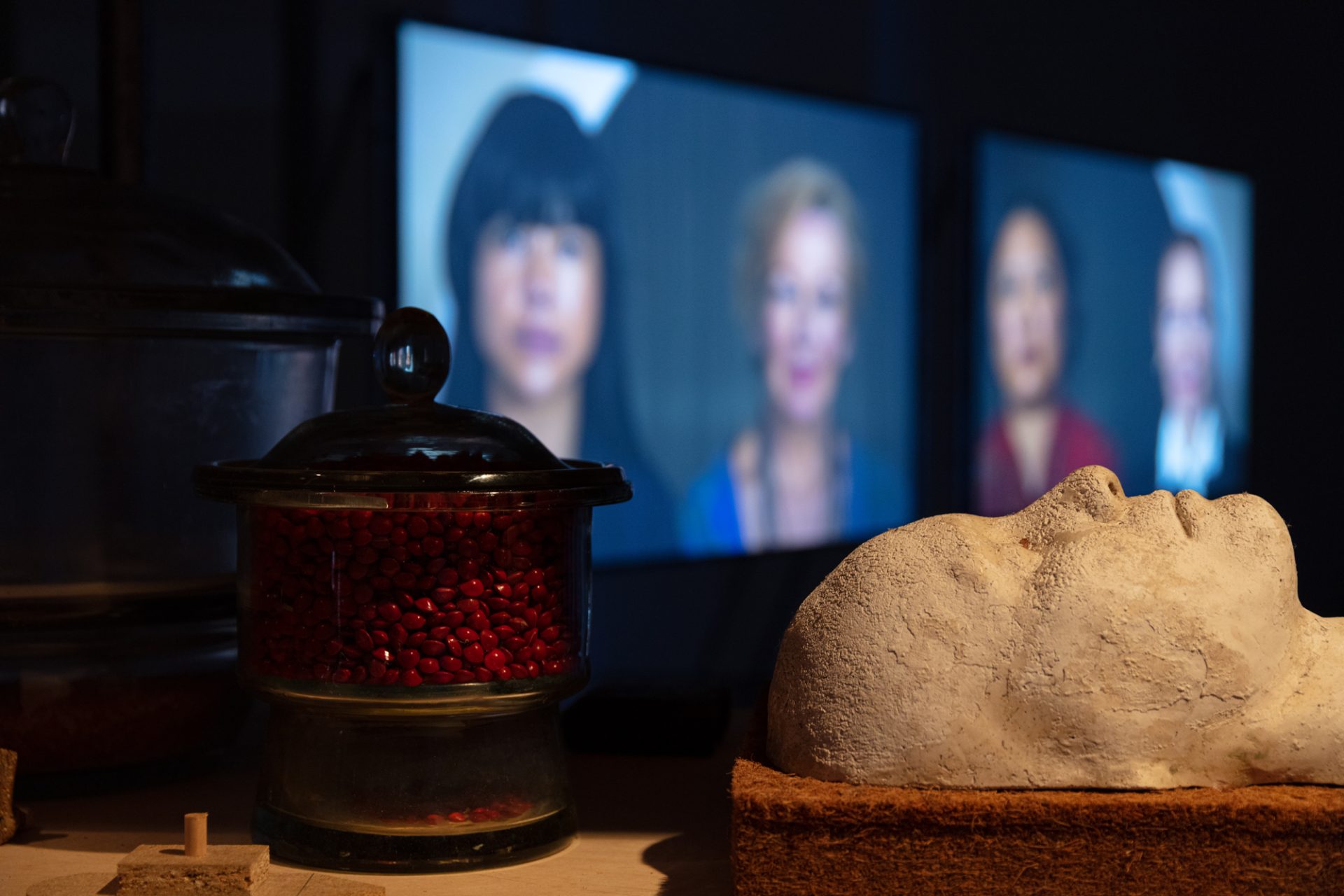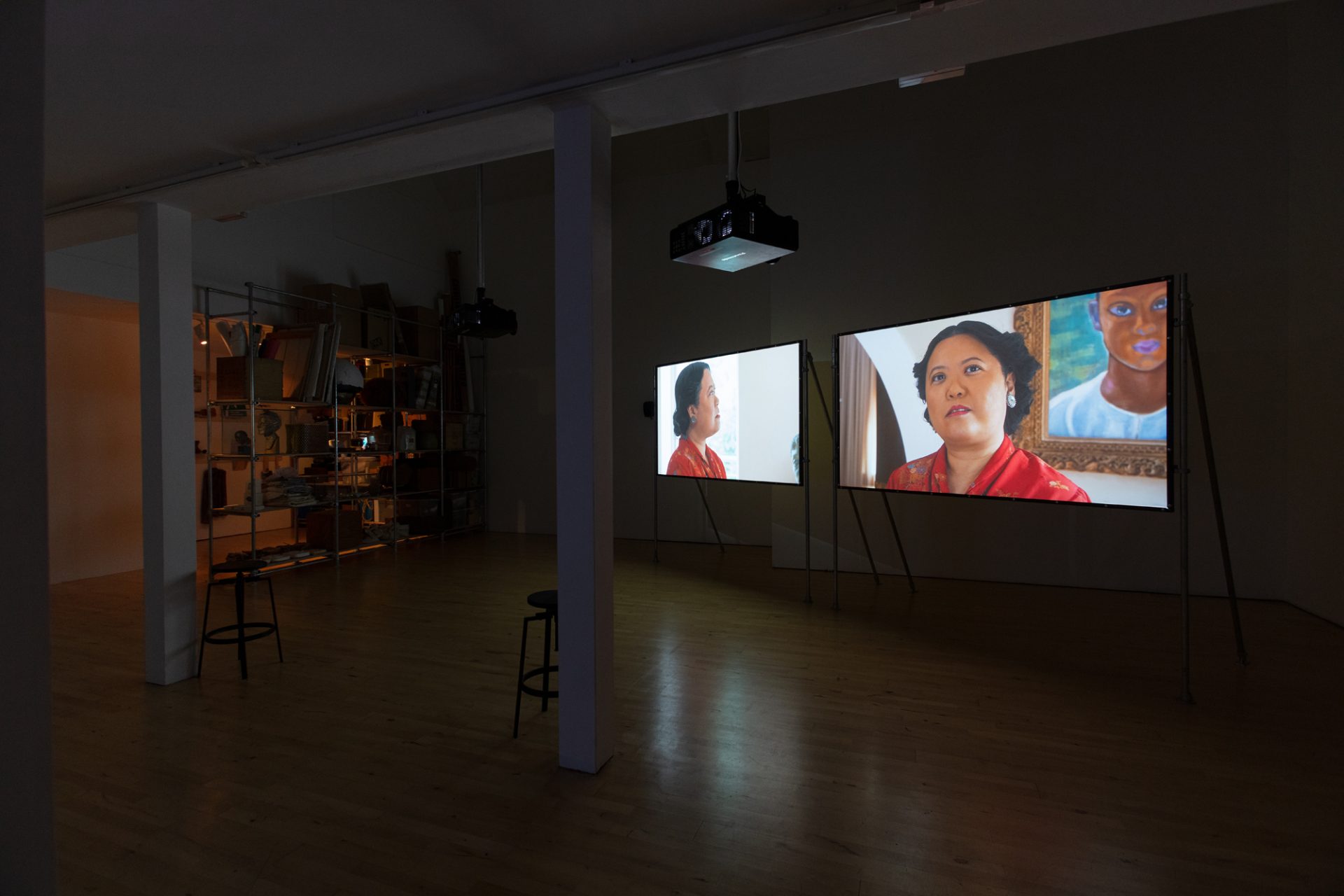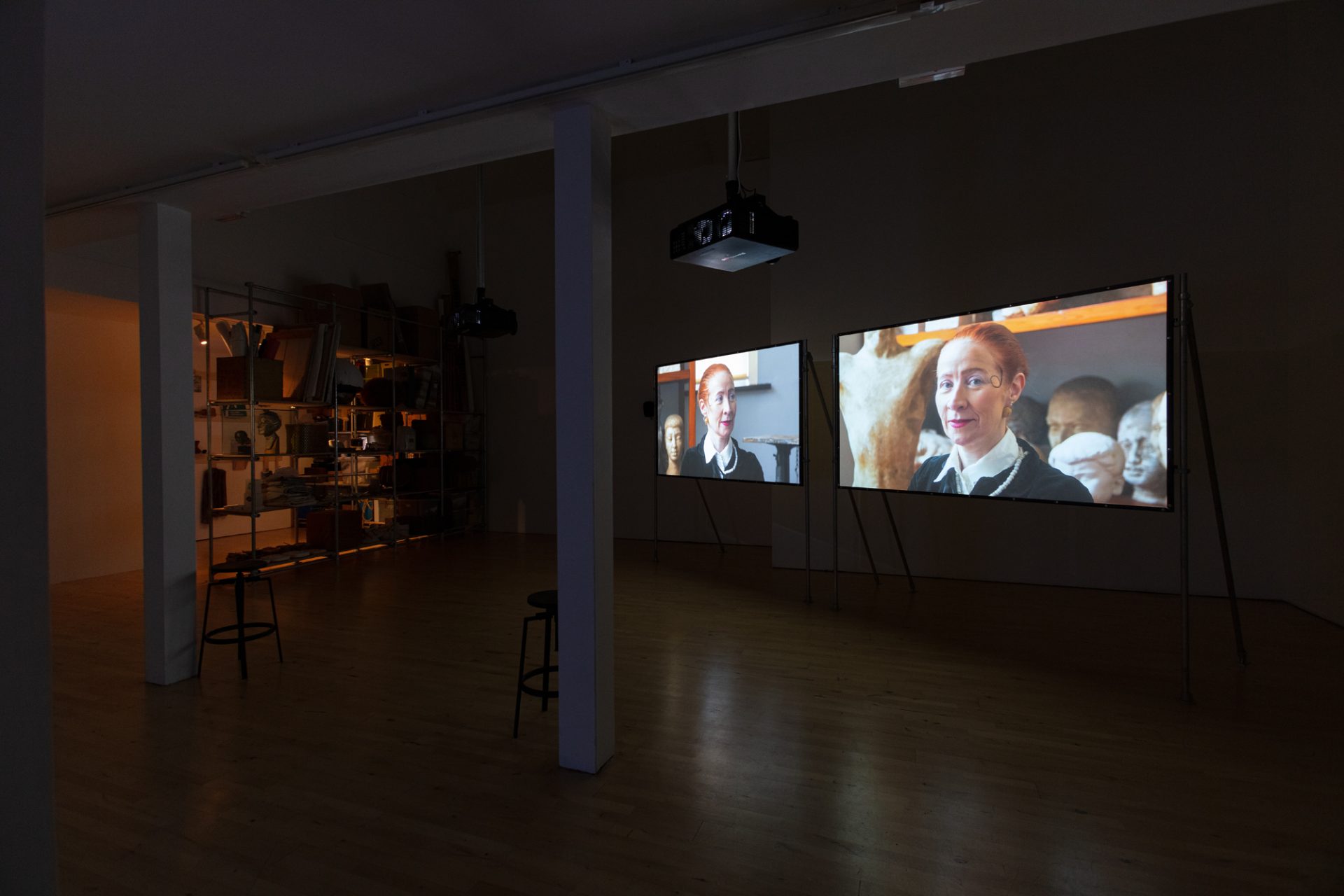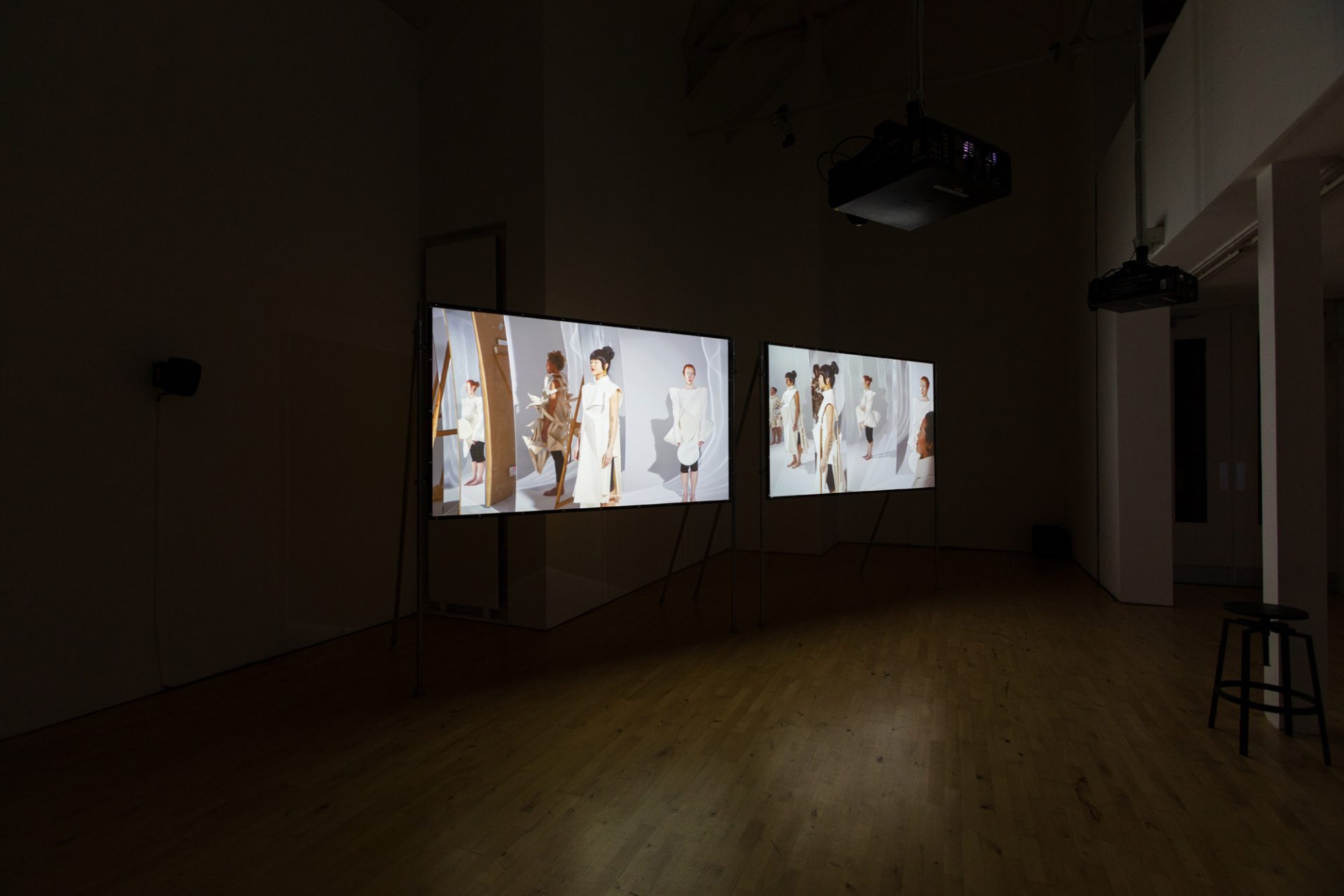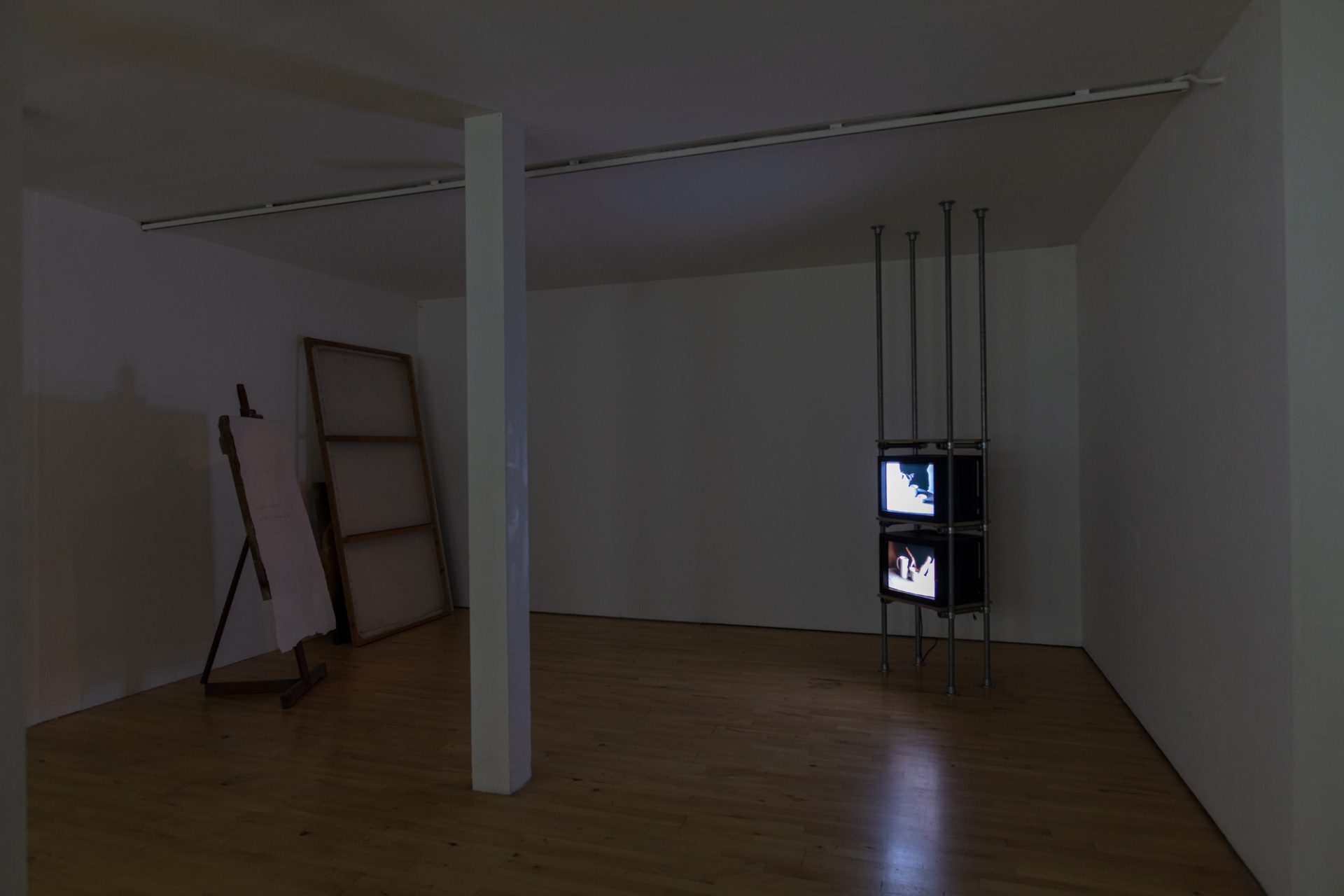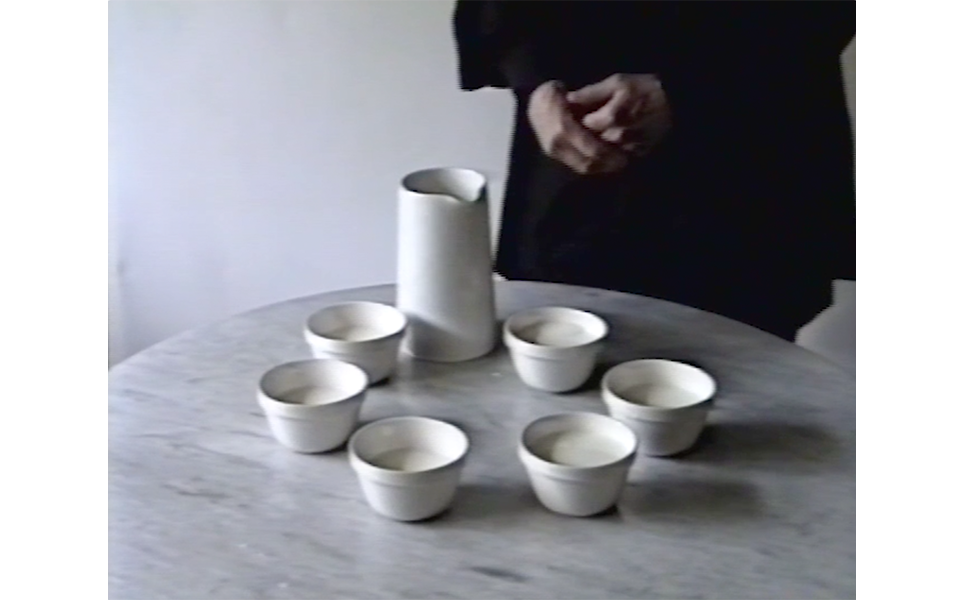Online Salon: Speculative Conversations Erika Tan in conversation with Kathleen Ditzig & Wendy Teo
Saturday 9 July | 1-3pm
Online Premiere: Erika Tan Barang Barang: Spectral Entanglements (2022) 2-channel video 23 mins. Online 9-16 July 2022
The exhibition Barang-Barang is a multi-faceted installation containing collected objects, materials and moving-image works produced over the course of Erika Tan’s Stanley Picker Fellowship. The project explores the value and relevance given to the material traces and afterlives of objects made, collected, discarded or valued by others, responding to local specificities, personal collections and historical connections that the artist encountered, from coconut coir mills in Kingston upon Thames to the speculative entanglements that she weaves between different events, places and people, including that of her mother Fay Tan.
Barang-Barang is a Malay word used colloquially in Singapore to mean ‘stuff’, ‘belongings’ or ‘freight’. In Khmer the word means ‘French’ and in Thai a similar sounding ‘farang’ is used for ‘stranger’, ‘foreigner’ or ‘white person’, but also to describe things that are imported. In the Cebuano language of the Philippines barang means ‘mythology’, ‘magic’ or ‘malignant sorcery’.
Whilst commencing her Fellowship research, Tan was immediately drawn to the history of the Stanley Picker Gallery’s physical location, on an island along the Hogsmill River that is the former site of an old water mill that once processed coconut coir for domestic and commercial use. For Tan the coconut itself provides a potent symbol of the diasporic experience, the history of its applications as a material and culinary ingredient representing an illustrative critique of global cultural exchange.
The exhibition focuses on the legacies of four female artists – Dora Gordine, Georgette Chen, Kim Lim and Fay Tan – who are brought together in filmic space to explore aspects of their lives. There is no evidence, as yet, that these women ever met, but Tan’s work imagines their possible conversations and interactions as artists and as women.
The main moving image work for the exhibition was filmed on location at Dorich House Museum, the former studio-home designed by Gordine herself in the 1930s. The house provides the setting for a speculative encounter between the four artists, who are brought together by Tan through what she describes as an “imagined constellation of celestial art historical references that stretch conventional understandings of time and space, geographical location and historical veracity”.
To accompany the Gallery exhibition, Tan has also intervened in the permanent collection displays at Dorich House Museum, requesting that Dora Gordine’s bronze heads of unidentified Asian subjects be turned to face away from visitors. At the Museum entrance a video of Gordine’s bust of Chia-Chu Chang (1925-26) sits across from Gordine’s own self-portrait (1930-32), the artist and her subject reconnected in a direct visual dialogue.
Barang-Barang continues Tan’s interest in ‘minor’ histories and a process of entanglement that the making of a work can foster. The project draws lines between disparate moments in time, individuals and geographical locations to find new positions and perspectives, not only through the specifics of these histories and individuals, but also the way in which we might understand larger or more known/received histories.
Barang-Barang was commissioned by the Stanley Picker Gallery, Kingston University and supported by the Stanley Picker Trust and Arts Council England. The project was previewed at Taipei Fine Arts Museum as part of Art Histories of a Forever War – Modernism Between Space and Home (Nov 21-Feb 22) in advance of its premiere at Stanley Picker Gallery accompanied by a display at Dorich House Museum, Kingston University. A limited-edition artist book is being produced to accompany the exhibition.
Thank you to everyone involved in helping to develop and stage the exhibition, including Sara, Ant & Charles at ADi, Aylish Browning, Maya Dew, David Falkner, Fiona Fisher, Lara Garcia, Anthony Lam, Guillermo (Will) Rodriguez Lopez, Jelena Luetzel, Faith McKie, Rebecca Moss, Sebastian Nissl, Gary Stewart, Alex Stillwell, Heidi Tan, Nathaniel Tan-Lam, Théo Welch-King, Tat Whalley and Saffron Yates.
Disclaimer: All representations of artists within the film work, whilst referencing factual materials such as oral histories, archival materials and interviews, are ultimately representations, mediated through personal and differently situated positions and interpretations. In this way, the works might be conceived of as fictional landscapes and constellations, as much about the artists’, performers’, and audiences’ desires, as they might reflect any specific lived experience.
